Review: Immediate Casualty Care IWB Medical Kit
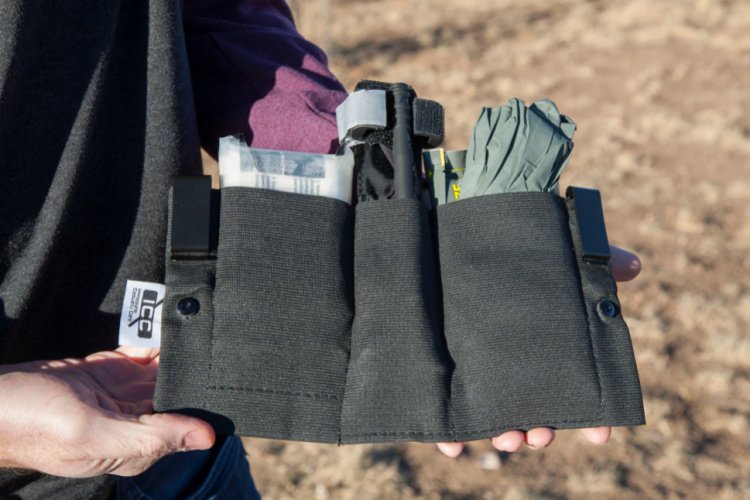
Ask yourself: if a life-threatening injury occurs, will you know what to do? Will you have the skills and trauma care equipment necessary to render aid to yourself, your family, and innocent bystanders until medical personnel arrives? Your answer to this question can spell the difference between life and death, so it’s a topic you should take seriously.
When Seconds Count
From the moment a traumatic injury occurs, the clock is ticking. Uncontrolled blood loss from a broken limb or gunshot wound can lead to death in as little as five minutes. But, according to a 2017 study published by the Journal of the American Medical Association, “Emergency medical service units average 7 minutes from the time of a 911 call to arrival on scene.” The report continues, “That median time increases to more than 14 minutes in rural settings, with nearly 1 of 10 encounters waiting almost a half-hour for the arrival of EMS personnel.”
It’s not difficult to learn how to pack a wound, wrap it in a compression dressing, and apply a tourniquet — even kids can be taught these basic skills. Organizations such as Stop the Bleed offer free virtual and in-person classes throughout the United States. We highly recommend taking one of these courses, or a more advanced wilderness first aid class, and periodically taking refresher courses to keep your skills sharp.
Trauma Care Tools
Training is critical, but it must be paired with the right tools. Now is the time to prepare a trauma care kit — often known as an individual first aid kit, or IFAK — that contains the essential resources for a life-threatening bleed. At a bare minimum, your kit should include the following:
- Tourniquet from the CoTCCC approved list
- Gauze (hemostatic and/or compressed)
- Compression bandage or emergency trauma dressing
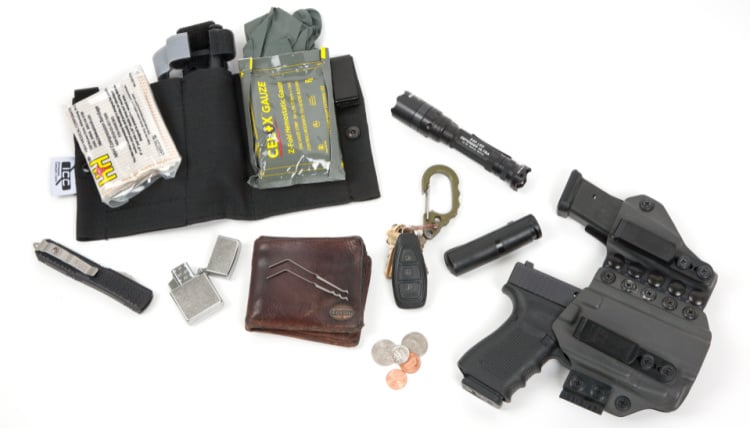
There are plenty of other tools that could be added to your kit — for example, chest seals are highly recommended. You may also include helpful accessories such as nitrile gloves, medical tape, and a permanent marker. Once you’ve started to train with your IFAK, you’ll be able to customize it to match your experience level.
Staging & Every-Day Carry Considerations
Immediate accessibility is essential for any first-aid kit, especially one focused on major trauma. It’s wise to stage larger kits in your home, office, car, and range bag, but it’s even wiser to have the key components on your person at all times.
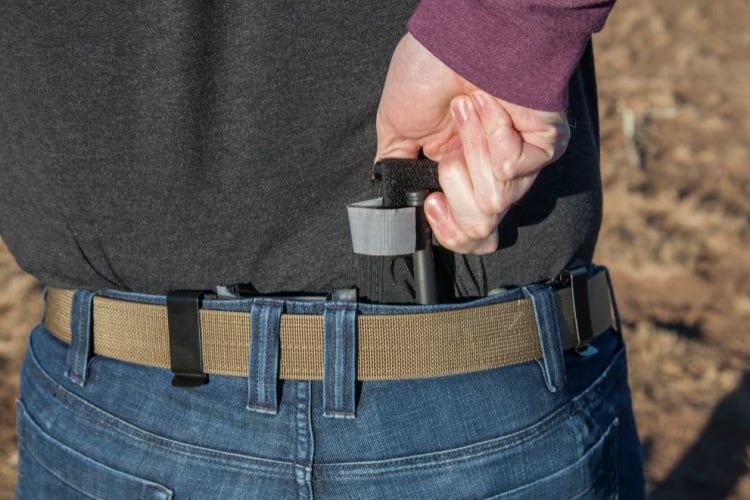
Although it’s perfectly legal to carry basic medical gear most places, including airports, openly carrying these items may lead to some uncomfortable questions from family or coworkers. Sadly, there are those who will assume your preparation is a sign of paranoia. For this reason, you may want to conceal your medical gear.
There are many ways to do this, including pocket IFAKs, ankle IFAKs, and inside-the-waistband IFAKs. Today, we’ll take a look at a good example of the latter — the IWB-Flat medical kit from Immediate Casualty Care (ICC).
About Immediate Casualty Care
Immediate Casualty Care is a veteran- and a first-responder-owned company that builds covert personal trauma kit carriers. All of the materials and hardware are sourced from the USA, and the kits are built in the USA.
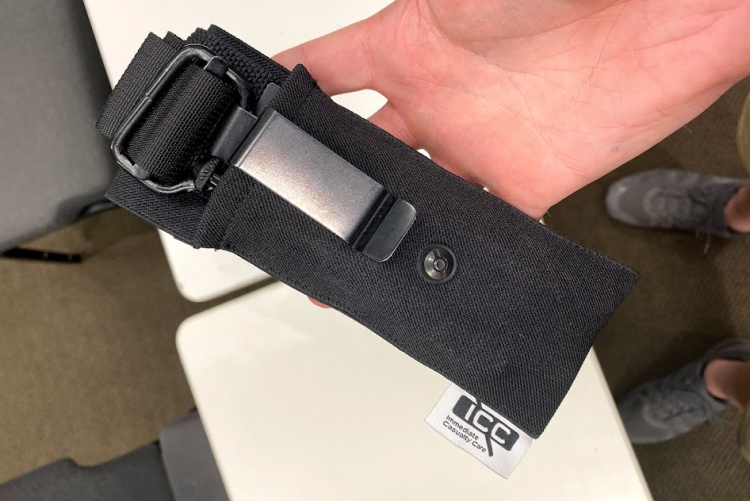
Several configurations are available, ranging from a standalone tourniquet pouch (pictured above) to various complete IFAK carriers. Each kit is built from strong latex-free elastic with stitched seams. The standard stainless-steel clips can be worn over a belt or the hem of a pair of pants. For an additional fee, buyers can upgrade to sturdy Discreet Carry Concepts belt clips, tuckable UltiClip 3+ clips, or non-metallic clips and hardware that won’t set off metal detectors.
ICC IWB-Flat Medical Kit Review
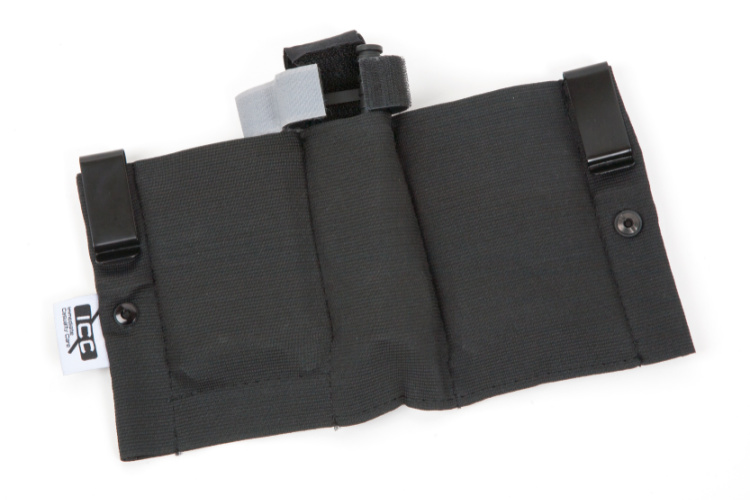
I tested the Immediate Casualty Care IWB-Flat, which offers storage for IFAK components in a wide, slim configuration. At 12 inches wide by 8 inches tall, it wraps around the waistline with a single layer of pockets. Other ICC kits place these pockets in a two-layer configuration, producing a smaller but thicker shape. I prefer the single layer to avoid any visible bulge underneath my shirt.
Since I carry my Glock and spare magazine in the appendix position, there’s plenty of space for the IWB-Flat IFAK anywhere on the back half of my waistline. If you carry strong side, you may need to shift the medical gear to the opposite side of your waist.
Kit Contents
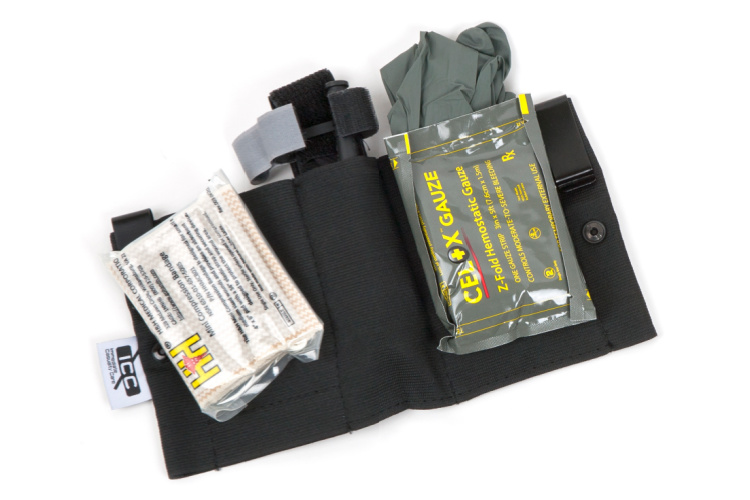
Each kit comes unloaded, so it’s up to you to choose the contents. I loaded my kit with the following items:
- C-A-T Gen 7 tourniquet
- Celox hemostatic gauze
- H&H Medical mini compression bandage
- Hyfin Vent chest seal twin pack (not pictured)
- Grey nitrile gloves*
*Note: Black gloves are not recommended. Light-colored material contrasts with blood, and makes it possible to detect injuries quickly with a “blood sweep.”
While this is advertised as a medical kit, there’s no reason it couldn’t be used to carry other EDC items. Pistol and rifle mags, pepper spray, fixed-blade knife, passport, emergency cash — the sky’s the limit.
Wearing the Kit
I slid this gear into the IWB-Flat medical kit, clipped the IFAK into my waistband, and went about my day. For the most part, I was able to forget I was even wearing it. The elastic material is comfortable, and the standard belt clips held it firmly in place. Personally, I find this more comfortable than an ankle kit, and I’m able to keep it concealed while wearing shorts (a necessity in the desert).
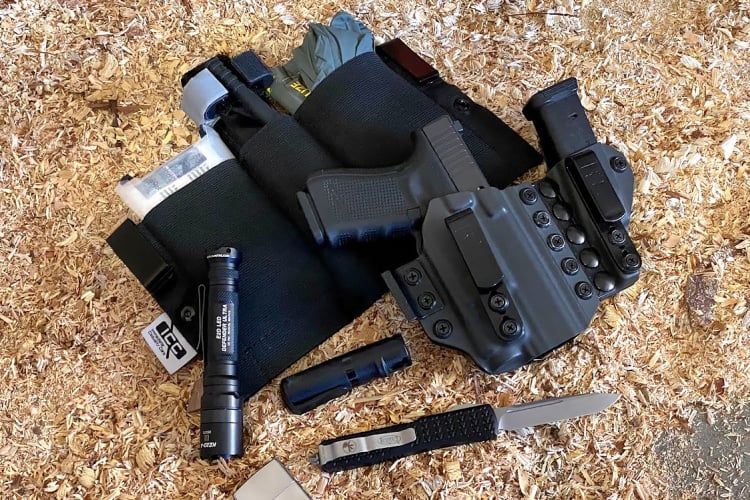
After a few days, I noticed that one of the clip screws had worked its way loose and fallen down my pant leg, never to be seen again. Lesson learned: always use thread locker on all the hardware for your EDC gear. Thankfully, I scavenged a compatible screw from an old knife sheath and was able to replace the missing part immediately. No problem.
There’s only one critique I have for the ICC IWB-Flat medical kit, and it’s mostly a byproduct of the contents. C-A-T tourniquets are covered in hook Velcro, both on the windlass retention band (when staged as seen in these photos) and the TQ strap. This exposed Velcro tends to snag on shirt hems, eventually pulling loose threads and leading to frayed areas. If you prefer the SOF-TT tourniquet, you won’t have these issues thanks to its Velcro-free design.
Recently, ICC released a “2.0” version of the kit with a high-back design that prevents contents from rubbing against the wearer’s skin. This is an improvement, but I’d like to see a version with an elastic cover that slips over the Velcro, similar to North American Rescue’s outside-the-waistband TQ carrier.
Conclusion
The ICC IWB-Flat has become my go-to EDC medical gear carrier. Its contents are supplemented by additional gear in my car and range bag, but it feels good to know I always have these basic trauma care items inside my waistband.


